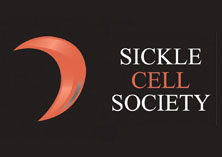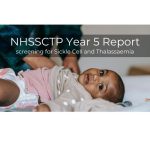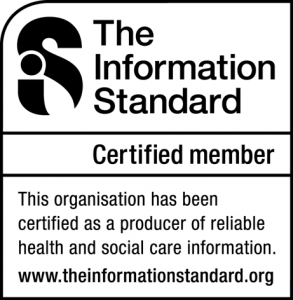This page is intended to give you the information you need to recognise sickle cell disease and to help someone who has it to lead a good life.
This site has been approved by OMNI and can also be accessed through their site and through NHS Direct.
Basic Facts
Sickle Cell Disease is the name given to a group of inherited conditions of haemoglobin formation. It includes Sickle Cell Anaemia (Hb SS), Haemoglobin SC Disease (Hb SC) and Sickle Beta Thalassaemia (Hb Beta-Thal). Of these the most common and severe is sickle cell anaemia.
There are over 300 different types of haemoglobin. The most common type is haemoglobin A (Hb A) and most people inherit Hb A from both parents (Hb AA). Sickle cell anaemia occurs when a person inherits 2 genes for Hb S, one gene from each parent.
For the fundamental facts on Sickle Cell Disorders go to the What is Sickle Cell? page.
Sickle Cell Trait is not an illness and cannot turn into Sickle Cell Disease.
What are haemoglobin SC disease (Hb SC) and Sickle Beta-Thalassaemia (Hb S-Thal)?
These conditions occur when someone inherits sickle haemoglobin (Hb S) from one of their parents and either haemoglobin C or Beta-Thalassaemia from the other parent. The symptoms of these two conditions are often similar to, but usually less severe than, those of sickle cell anaemia. People with Sickle Cell Anaemia, Sickle Beta -Thalassaemia and SC disease can have problems with sight, although this retinopathy is more likely to occur in Hb SC individuals.
What are the symptoms of sickle cell disorders?
Although sickle cell disorders are present from birth, symptoms are rare before the age of three to six months, due to the persistence of foetal haemoglobin ( Hb F ). The main symptoms of sickle cell disorders are anaemia, pain or infection. The episodic exacerbation of pain, anaemia or jaundice are called sickle cell crises. Some people get crises quite often; others may have them only once every few years. In between crises the affected person is usually quite well. Most serious acute complications occur during childhood.
People with SC disease and some with Sickle Beta -Thalassaemia may never experience a painful crisis but still develop chronic eye, bone or kidney problems.
People who only have sickle cell trait do not suffer any of the symptoms of sickle cell disorders. Sickle cell trait is not an illness and people with trait are usually healthy (although very occasionally haematuria may occur). However, they require extra oxygen during anaesthesia and surgical operations, and are advised against participating in some sports, such as scuba diving or climbing very high mountains, where the oxygen supply may become reduced.
How to recognise a sickle cell crisis?
A crisis may be associated with a sudden onset of any of the following:
Pain
Sickle cell anaemia ( Hb SS ) sometimes causes attacks of pain to the chest, abdomen, back, jaw, legs and arms. They occur because the Sickling of the red blood cells causes them to block up small blood vessels and stop the flow of blood. The ‘sickling’ of red blood cells which can cause a crisis is more likely to take place under certain conditions. These include a reduction of the level of oxygen in the blood (after exertion, during anaesthetics or at very high altitudes), dehydration, and during pregnancy. Painful crises may also occur in association with febrile childhood or adult illnesses. If pain is very severe, admission to hospital may be necessary.
Anaemia
People with sickle cell disease are not always anaemic. In those with Sickle Cell Anaemia, however, the haemoglobin is between 7 and 10 G / l and the blood picture shows anisocytosis, sickle cells and a raised reticulocyte count due to haemolysis. The anaemia may become worse as a result of acute splenic sequestration or an aplastic crisis. If so, emergency treatment with blood transfusions may be necessary.
Infections
People with a sickle cell disorder are particularly prone to minor infections and also to serious and life-threatening infections like septicaemia, pneumococcal meningitis and osteomyelitis.
Other problems
Sickle cell disorders involves multiple systems. Children may get painful swelling of the hands and feet (called the hand-foot syndrome). They are also prone to enuresis and delayed puberty.
Adults (and sometimes children) can develop stiff and painful joints or ulcers on the lower legs. In general, people with sickle cell disease have an increased incidence of gallstones, jaundice, haematuria, strokes, priapism and difficulties during pregnancy and childbirth.
Diagnosis of Sickle Cell Anaemia and Sickle Cell Trait
One method of diagnosing both sickle cell disease and trait is a specific blood test called haemoglobin electrophoresis which shows the haemoglobin type (e.g. AA, AS, AC, SS, SC etc..).
The sickle cell solubility test is a simple method that detects the presence of sickle haemoglobin, but does not distinguish between sickle cell trait and sickle cell disorders, and gives no information about the other abnormal haemoglobins. It should never be used on its own.
Family studies and the measurement of Hb A2 and Hb F may be required for a complete and accurate diagnosis of sickle cell disease.
When to screen for sickle cell trait and disease
People of relevant ethnic origin should be offered screening, with genetic counselling before and after screening. People should be screened:
Prior to anaesthesia.
Prior to conception whenever possible. e.g. when discussing contraception or sexual health.
At antenatal booking clinics.
At birth.
Management of people who have sickle cell disorders
(Note: This section does not refer to sickle cell trait.)
Although there is no cure for sickle cell disorders, doctors and other professionals can help to reduce the frequency and severity of crises and their complications by prompt recognition and treatment. Like any chronic illness, sickle cell disorders are sometimes difficult to come to terms with. Practical and sympathetic advice can help affected families and individuals to cope with the inconvenience and painful effects of the condition.
Treatment of sickle cell disorders depends on the condition of the patient. In general, management falls into the following categories:
Steady State
- Aim for the patient to live as normal a life as possible but be prepared to take immediate action if he or she becomes ill.
- Maintain general health and nutrition. Make sure that the patient keeps warm and dry.
- Avoid situations likely to precipitate crisis e.g. dehydration, acidosis, general anaesthesia, and sports such as skydiving and scuba diving.
- Treat infections early.
- Arrange regular blood tests. These are needed for reference in a crisis and to monitor kidney and liver function .
- Consider folic acid supplements.
- All patients with sickle cell disorders should be offered prophylactic penicillin. (Research article on “Wyeth’s Prevenar: A Vaccine Substitute for Penicillin” may be of interest)
- Pneumococcal vaccination should be offered although it does not protect against all strains of pneumococci.
- Ensure adequate malaria prophylaxis as sickle cell disease offers no protection – but see 9 below.
- Beware of coexistent Glucose-6-phosphate dehydrogenase (G6PD) deficiency. There is a high incidence in the population groups prone to sickle cell disorders. Acute haemolytic crisis may be provoked in people with sickle cell disease by eating broad beans (favia) or by the administration of certain drugs including some anti-malarials.
- Offer genetic counselling.
- Give the patient a haemoglobinopathy card or a letter giving details of his or her condition.
- Cognitive Behavioural Therapy can be effective for managing sickle cell disease and pain
Crisis
Minor crises can be safely managed at home with pain killers and increased fluid intake. If the patient has high fever, severe pain requiring opiate analgesia, pain in the chest, spine or abdomen, or neurological signs, he or she should be admitted to hospital. Small children, who are always at risk from severe infections, should ideally be seen by a paedriatician with experience in sickle cell disease.
In hospital the following management is usually offered:
- Immediate pain relief usually with opiate analgesia.
- Intravenous fluids.
- Antibiotics.
- Oxygen treatment is required if the blood oxygen saturation is low.
- Blood transfusion, often an transfusion in the most severe crises.
Pregnancy
Pregnancy in sickle cell disease is associated with increased risks to both the mother and the baby. Affected pregnant women should be looked after by a unit experienced in the care of women with this condition.
Blood transfusion may be needed in some women with poor obstetric history or a severe form of sickle cell disease. Regular folic acid, prompt treatment of infections and crisis, and an increased fluid intake make it possible for most women to have successful pregnancies.
Glossary
Haemoglobin type and Description
Hb A: Usual haemoglobin, also called adult haemoglobin.
Hb AA: The inheritance of Hb A from both parents.
Hb S: Sickle Haemoglobin.
Hb AS: Sickle cell trait. The inheritance of Hb A from one parent and Hb S from the other parent.
Hb SS: Sickle cell anaemia. The inheritance of Hb S from both parents.
Hb AC: Hb C trait. The inheritance of Hb A from one parent and Hb C from the other parent.
Hb SC: SC disease. The inheritance of Hb S from one parent and Hb C from the other parent.
Hb CC: Hb C disease. The inheritance of Hb C from both parents.
Hb A Beta-Thal: Beta-Thalassaemia trait. The inheritance of Hb A from one parent and
Hb Beta-Thal from the other parent.
Hb S Beta-Thal: Sickle Beta-Thalassaemia. The inheritance of Hb S from one parent and Beta-Thal from the other parent.
Hb A2 and Hb F: Haemoglobins usually only present in small amounts but present in increased amounts in Beta-Thalassaemia trait. Quantitation of these haemoglobins can therefore be useful in the diagnosis of this condition.
Where to get further information
- Local Health Promotion Unit
- A local Sickle Cell Centre or Support Group. Contact Sickle Cell Society for details
- For the latest findings look at our Reports and Research page
- There are often relevant articles on the News page









